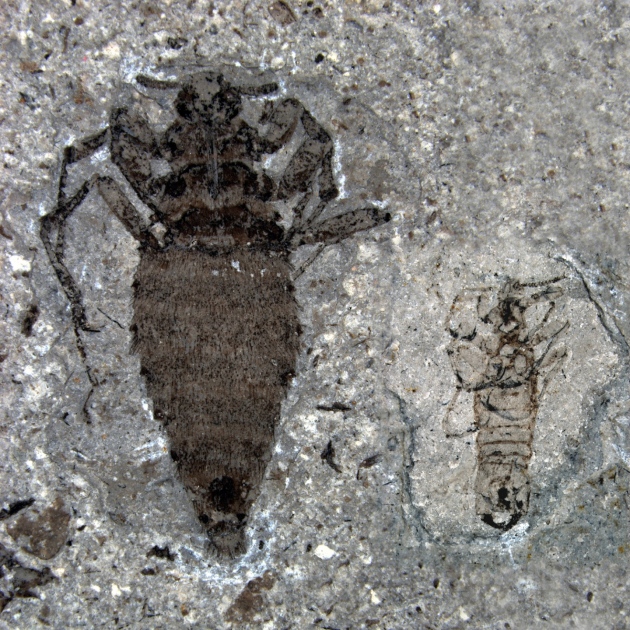Primitive fleas were built
to sup on dinosaur blood in the Jurassic period, more than 150 million years
ago. The potential host–parasite relationship has been uncovered thanks to a
set of beautifully preserved fossils found in China .
Fleas from
the Jurassic period (165 million years ago) couldn't jump, and may have had to
ambush their hosts.
D. Huang et
al, Nature
Today, the varied
group of parasitic insects known as fleas frequently infests mammals and birds.
But little is known about their origins. The flea fossil record consists mainly
of modern-looking species from the past 65 million years, and the identity of
possible fleas from the Cretaceous period (145 million to 65 million years ago)
has been debated by experts. But Michael Engel, a palaeoentomologist at the University of Kansas in Lawrence, and his colleagues
have now extended the history of the parasites by at least 60 million years. Their
work is published online today in Nature 1 .
Engel and his co-authors
studied nine flea specimens from two sites: the 165-million-year-old Jurassic
deposits in Daohugou and the 125-million-year-old Cretaceous strata at
Huangbanjigou, both in China . The insects were not quite like
fleas as we now know them. Whereas modern fleas range from 1 to 10 millimetres
in length, the Jurassic and Cretaceous species were between 8 and 21 millimetres.
“These were hefty insects as far as fleas are concerned,” says Engel. But it wasn’t just size
that set the prehistoric species apart. The Jurassic and Cretaceous fleas
lacked the spring-legged, jumping specializations of modern species, and their
siphoning mouthparts were armoured structures studded with saw-like
projections, unlike the smooth jaws of modern fleas. How these traits relate to
the lifestyle of the fleas is difficult to determine, says Engel, but they may
indicate that the fleas were ambush specialists, which caught meals by “hiding
in the periphery and then scrambling onto the host for brief periods to feed
before bolting again”. What those hosts were is
another question. “The mouthparts are certainly overkill for piercing the hides
of early mammals and birds,” says Engel. “It really appears as though they were
specialized for working their way into some heavy hides, such as those on
dinosaurs.” George Poinar, a
palaeoentomologist at Oregon State University in Corvallis , agrees that without jumping legs,
the fleas “would have to crawl or run to find a host”. He adds that “they could
have attacked dinosaurs or possibly pterosaurs”. But perhaps the only way to
be sure would be to find fossil fleas caught in the act of feeding on dinosaurs.

No hay comentarios:
Publicar un comentario